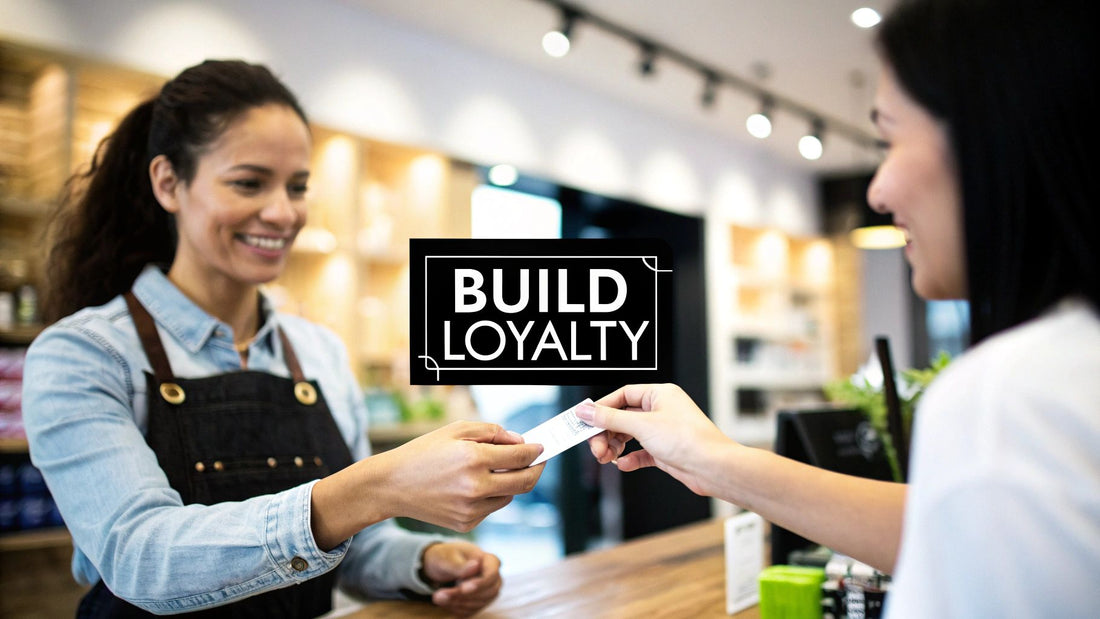
How to Build Customer Loyalty: Proven Strategies for Success
Share
When it comes down to it, building real customer loyalty is all about one thing: creating consistently positive experiences that make people feel seen and appreciated. This isn't about one single, fantastic interaction. It's about weaving exceptional service, personalized communication, and genuine human connection into the very fabric of your business.
Why Customer Loyalty Is Your Ultimate Growth Engine
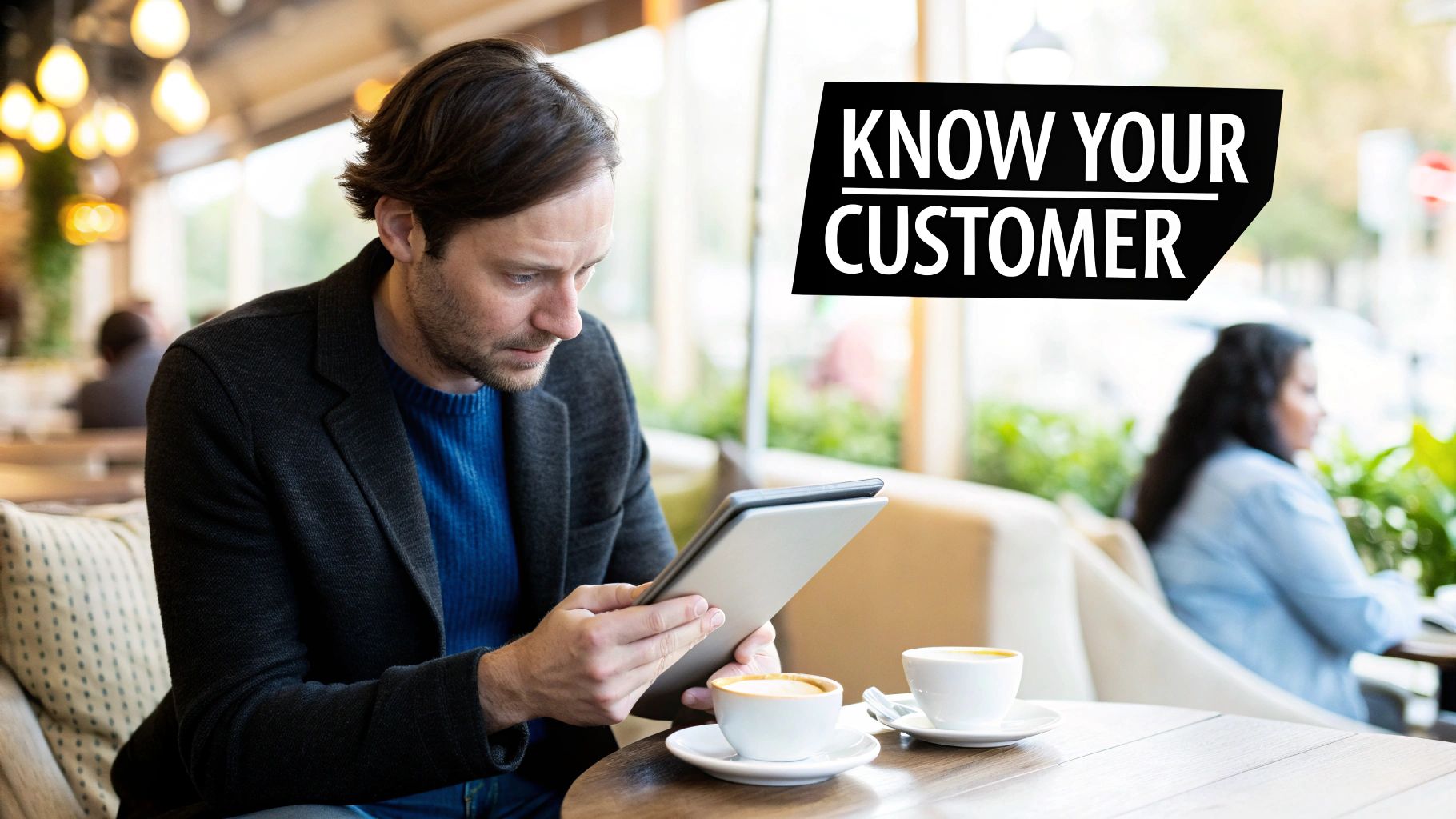
In a world where finding new customers is more expensive than ever, the real game isn't just about landing that first sale—it's about earning the next one. I see so many businesses throw money at shiny, complex loyalty tech, yet customer trust keeps eroding. This guide cuts through the generic advice to give you a deliberate, human-first approach that turns one-time buyers into your biggest fans.
The Real Cost of Neglecting Loyalty
Focusing only on getting new customers through the door is a classic, costly mistake. When you chase new faces instead of nurturing the relationships you already have, you get stuck in a frustrating cycle of high spending for low returns. Your loyal customers, on the other hand, are your best defense against a volatile market and skyrocketing acquisition costs.
Think about the direct financial impact here:
- Higher Lifetime Value: Repeat customers simply spend more over time. Once they trust you, they're often less sensitive to price, too.
- Reduced Marketing Spend: Nothing beats word-of-mouth. When your loyal fans start talking, you get the most effective and affordable advertising there is.
- Improved Profitability: It's just flat-out cheaper to keep a customer than to find a new one. Understanding your retention rate is crucial for managing your print-on-demand profit margins and the overall health of your business.
The Loyalty Paradox
There’s a strange thing happening in the business world right now. Companies are pouring more money than ever into loyalty management—the market is expected to balloon from $13.31 billion in 2024 to $41.21 billion by 2032. This spending frenzy makes sense when you see that customer acquisition costs have shot up by nearly 60% in just the last five years.
But here's the kicker: despite all this investment in programs and tech, overall consumer loyalty has actually gone down. You can dig into the numbers in this full report on customer loyalty statistics.
This disconnect tells us something really important: you can't buy loyalty with technology alone. Without a genuine, customer-first strategy behind it, even the slickest rewards program won't create a real connection.
Think of this guide as your playbook for building relationships that actually last. It’s about creating an experience so good that your customers wouldn’t even think of going somewhere else. By focusing on the strategies we're about to cover, you can build a sustainable business powered by your most valuable asset: your loyal customers.
Start with a Foundation of Unforgettable Service
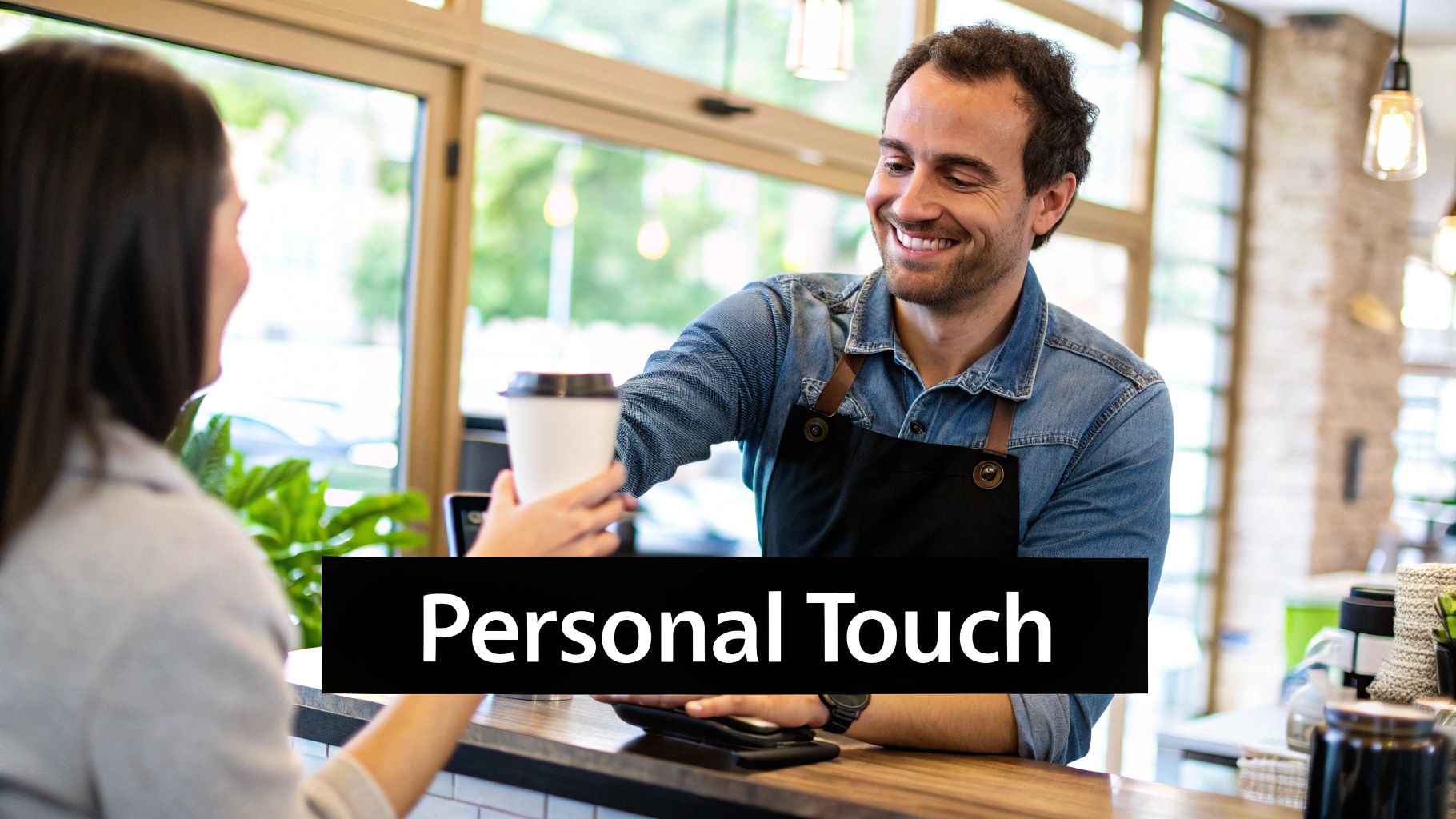
Before you even think about loyalty cards or rewards points, let’s talk about what really matters. The true foundation of customer loyalty isn't a program—it's phenomenal, unforgettable service. I'm not talking about robotic greetings or reading from a script. It’s about building a culture where every single interaction makes a customer feel like they are genuinely heard and valued.
This human touch is more important now than ever. You might be surprised to learn that while general customer satisfaction is holding steady, the metrics that really count—like trust and advocacy—are actually on the decline.
A 2025 global study revealed that only about 45% of consumers truly trust the brands they buy from. Even more telling, just 35% would go out of their way to recommend those brands to others. This tells us that just meeting expectations is no longer enough. To earn real loyalty, you have to go further. You can dig into the full global consumer loyalty study on Qualtrics.com.
The businesses that are winning today are the ones who have mastered the human side of things: empathy, speed, and total transparency. They’re building a reputation that no rewards program could ever buy.
Empower Your Team to Be Problem-Solvers
What’s the one thing that drives customers absolutely crazy? Being passed from one person to another, forced to repeat their story over and over. This is where empowering your team becomes your secret weapon. You have to give your people the authority to solve problems right then and there.
Think about this scenario: A local charity calls your print shop in a panic. Their order of 50 t-shirts for a fundraiser arrived, but the color is slightly off, and the event is in two days. Instead of having to "ask a manager," your employee immediately apologizes, promises to reprint the entire order correctly, and overnights it at no charge. They even tell the customer to keep the misprinted shirts.
In one conversation, you’ve turned a potential disaster into a story that customer will tell everyone. That’s the power of trusting your team.
Here are a few ways to get started:
- Give them a "Fix-It" Fund: Let each team member use a small discretionary budget (say, $50) to resolve issues without needing approval. This can cover anything from expedited shipping to a partial refund or a small gift card.
- Train for Scenarios, Not Scripts: Ditch the scripts. Instead, role-play common customer problems. This builds the confidence and critical thinking skills your team needs to find real, authentic solutions on the fly.
- Celebrate the Wins: When an employee turns a bad situation into a great one, make them a hero. Shout out their success in your next team meeting to reinforce just how much you value that kind of initiative.
Turn Tough Feedback into Your Greatest Opportunity
Negative feedback isn't an attack—it's a gift. It's a free, unfiltered look at exactly where your business can get better. How you handle that criticism can be a defining moment that turns an unhappy buyer into one of your biggest fans.
Imagine a small business owner emails you, unhappy with the quality of their latest DTF transfer order. Instead of sending a defensive, corporate-sounding reply, you pick up the phone and call them directly. You listen, you sincerely apologize, and you explain that you were testing a new film that week which clearly didn't meet your standards.
Then, you offer a full refund plus a credit for their next order. Most importantly, you ask them for specific details on what was wrong, which you then use to tighten up your quality control. That kind of honesty and accountability builds a level of trust that is almost impossible to break.
Master the Art of Proactive Communication
Truly great service isn't just about reacting to problems; it's about getting ahead of them. This means anticipating what your customers might need and keeping them in the loop before they even have to ask. For any business that deals with a supply chain, like custom printers who depend on reliable https://cobradtf.com/blogs/guides/print-on-demand-suppliers, this is absolutely critical.
Let’s look at the difference it makes.
| Scenario | Reactive (The Bad Way) | Proactive (The Great Way) |
|---|---|---|
| Supply Delay | Waiting for the customer to call and ask, "Where's my order?" | Emailing the customer the moment you know there's a delay, explaining why, and giving them a new, realistic ETA. |
| Product Question | Relying on a basic FAQ page and hoping customers find the answer. | Sending a follow-up email after their purchase with tips on how to care for their custom prints. |
| Order Confirmation | A generic, automated email with just an order number. | A personalized confirmation that includes an estimated shipping window and a friendly "thank you" from your team. |
When you get out in front of potential issues, you show customers you’re on their side. This simple shift from reacting to anticipating is a cornerstone of loyalty. It shows you respect them and their time, turning a simple transaction into a reassuring partnership.
Design a Loyalty Program That People Actually Use
So, you’ve put in the work and your customer service is top-notch. The natural next step is thinking about a loyalty program. But let's be real—most of them are a total snooze. They become just another card stuffed in a wallet or an email that gets instantly deleted, doing absolutely nothing to build actual loyalty.
The point isn't just to hand out freebies. It's about creating an experience that makes your best customers feel like they're part of an exclusive club. For a small shop or a custom printer, a well-thought-out program is one of the best tools you have for encouraging repeat business and turning customers into advocates. The secret is to think beyond the classic "buy ten, get one free" punch card.
This image below captures that perfect moment—a customer joining a loyalty club. It should feel less like a transaction and more like getting a special invitation.
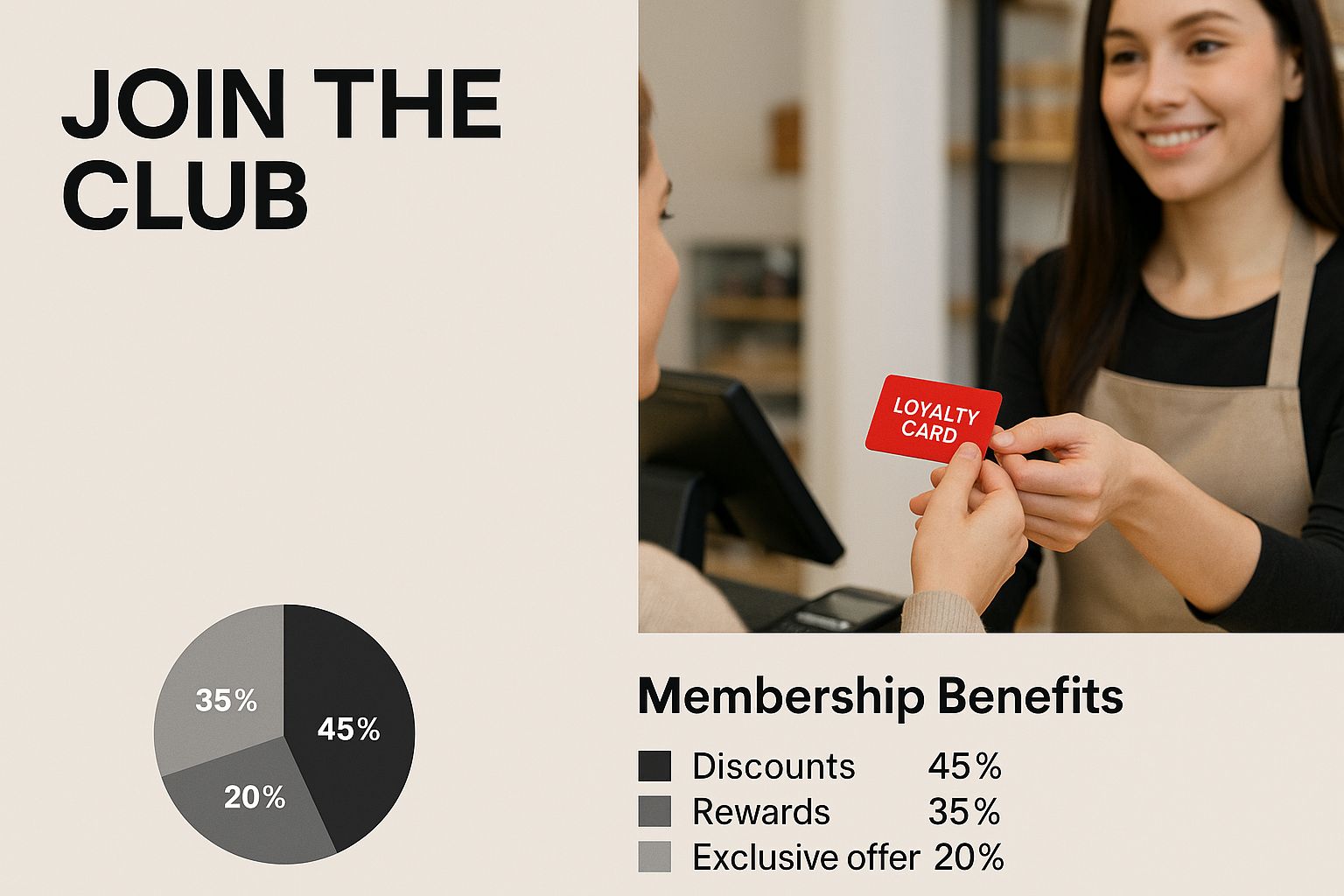
This is the start of the journey. The value should be so clear and inviting that customers are excited to join your brand's community.
Go Beyond Simple Points
The most common mistake I see is creating a program that’s just plain boring. A simple points-for-purchase system isn't terrible, but it rarely forges any kind of emotional connection. To build that deep-seated loyalty, your program needs to feel special and offer rewards your customers genuinely want.
Here are a few models that generate way more excitement:
- Tiered Programs: These work because they tap into our natural desire for achievement. Customers start at a base level (like Bronze) and unlock better perks as they spend more, graduating to Silver, Gold, or whatever you want to call it. A custom printer could offer Bronze members a 5% discount, while Gold members get 15% off, free express shipping, and priority job processing.
- Experiential Rewards: Sometimes, the best rewards aren't things you can buy. For a local print shop, this could mean inviting your top clients to an exclusive workshop on new design software or giving them a behind-the-scenes tour of your printing process. These experiences build a far stronger bond than a simple discount ever could.
- Exclusive Access: Make your loyal customers feel like true VIPs. This could be early access to new products (like a fresh line of DTF transfer film), first crack at sale items, or access to a members-only section of your website with helpful content.
The key is making the rewards feel like a genuine "thank you," not just a transactional gimmick. When you consider that 61% of buyers say personalized offers make them more likely to purchase, it's clear a one-size-fits-all program just isn't going to cut it.
Keep It Simple and Achievable
The second biggest killer of loyalty programs? Over-complication. If your customers need a Ph.D. in mathematics to figure out your points system, you’ve already lost. The rules need to be dead simple, and the rewards have to feel within reach.
Think about a small coffee shop offering a free drink after 10 purchases. Easy to understand, right? But if a custom apparel business requires a customer to spend $2,000 just to earn a $10 credit, people will tune out fast. The perceived value just isn't there.
As you map out your program, ask yourself these gut-check questions:
- Is it a pain to join? A simple email sign-up is all you need. Ditch the long, complicated forms.
- Can people track their progress? Customers should be able to see how close they are to a reward, whether it’s through an online account, an app, or even a simple punch card.
- Are the rewards actually desirable? Don’t just offer discounts on stuff that isn’t selling. Ask your best customers what they’d love to get. Their answers might surprise you.
Communicate the Value Clearly
A brilliant loyalty program is completely useless if nobody knows it exists or understands how it benefits them. You have to promote it and constantly remind customers of the value they're getting.
This goes way beyond a little sign at the checkout counter. Weave it into your entire customer experience. For instance, when a customer places an order, your confirmation email could say, “Awesome, you’re only two orders away from unlocking free shipping!” That simple nudge keeps the program top-of-mind and encourages that next purchase.
To help you decide what fits your business, here’s a quick rundown of the most common loyalty program models.
Comparison of Customer Loyalty Program Models
| Program Type | How It Works | Best For | Potential Pitfall |
|---|---|---|---|
| Points-Based | Customers earn points for every dollar spent, which can be redeemed for rewards. | Businesses with frequent, small purchases, like a coffee shop or a small online retailer. | Can feel generic if the rewards aren't compelling or the earn rate is too low. |
| Tiered | Customers unlock new levels of benefits as their spending increases over time. | Businesses looking to reward their highest-value customers, like B2B printers or boutique apparel stores. | The initial tiers must offer enough value to keep new members engaged and motivated. |
| Paid (VIP Club) | Customers pay a recurring fee for access to premium perks, like free shipping or exclusive discounts. | E-commerce businesses with a dedicated customer base, like Amazon Prime. | The value proposition must be incredibly strong to convince people to pay for it upfront. |
Ultimately, a successful loyalty program should be an extension of your brand’s personality. It needs to reflect the same care and thoughtfulness you pour into your products and services. By making it simple, desirable, and easy to understand, you can turn a basic rewards system into a powerful engine for building a loyal customer base that sticks with you for the long haul.
Use Personalization to Forge Real Connections
Customers stick with brands that truly "get" them. It's one thing to offer great service or a decent loyalty program, but the deepest connections are forged when you make things personal. It’s all about using what you know about your customers to create experiences that feel relevant, thoughtful, and genuinely human.
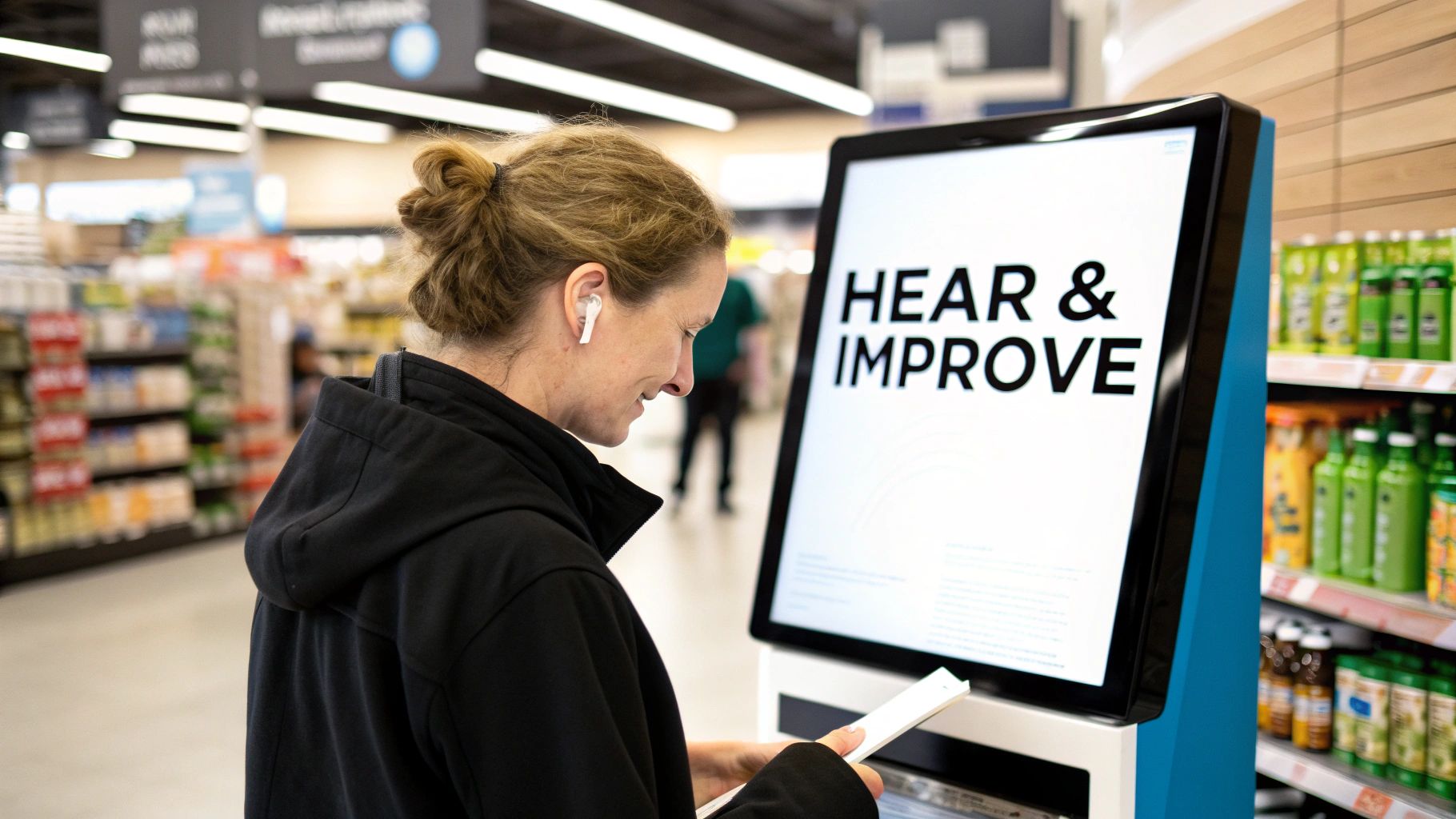
This doesn’t require complex algorithms or invasive data tracking. Even with limited resources, any small business can make a customer feel seen and valued. Small, personal touches can transform a simple transaction into a lasting bond, showing people they're more than just an order number.
A 2024 study from Forbes really drives this home: 81% of U.S. shoppers prefer brands that offer a personalized experience. This isn't just a "nice-to-have" anymore; it's a core expectation that directly influences where people spend their money.
When you personalize the experience, you’re showing that you're paying attention. Do it right, and your customers will feel understood and appreciated, which is one of the most powerful drivers of repeat business.
Use Purchase History for Smart Recommendations
One of the easiest—and most effective—ways to get started is by looking at what a customer has bought before. Using their purchase history to inform future suggestions shows you understand their needs and tastes. It saves them time and makes their shopping experience genuinely better.
For example, imagine a customer who frequently orders DTF transfers for youth sports team jerseys. Instead of hitting them with generic marketing blasts, you could send a targeted email highlighting new, durable ink options perfect for athletic wear. That simple act shows you recognize their specific business needs and are actively looking out for them.
Here are a few actionable ways to put this into practice:
- Targeted Email Campaigns: Segment your email list based on buying habits. If you have a group that always buys holiday-themed transfers, give them an early preview of next year's designs. They'll appreciate the inside scoop.
- Helpful Follow-Ups: After a purchase, send an email with tips related to their order. For a customer who just bought their first set of transfers, a link to a guide on the best practices for https://cobradtf.com/blogs/guides/dtf-printing-shirt is incredibly useful.
- Smarter Website Suggestions: If your e-commerce platform allows, set up a "You Might Also Like" section based on their browsing history or past orders. It’s a classic for a reason.
Celebrate Milestones in an Authentic Way
Acknowledging customer milestones is a fantastic way to build an emotional connection, but it has to feel real. Anyone can set up an automated "Happy Birthday" email with a generic discount. The real magic happens when you make it feel personal.
As a custom printer, you could track the anniversary of a client's first order. Think about the impact of a simple, handwritten note that says, "Can you believe it's been a year since we started working together? We love seeing your business grow!" That small gesture can mean the world to another small business owner.
This approach reinforces that you value the long-term relationship, not just the next sale. It’s a low-cost, high-impact strategy that shows you’re in it for the long haul.
Remember the Little Details
In a world full of automated responses and chatbots, remembering the small details from past conversations can make your business stand out dramatically. This is where small businesses have a huge advantage over the big guys. You and your team can create genuine human connections.
Picture this: A customer calls with a question and casually mentions they’re swamped working on a big order for a local school's fundraising event. The next time they call, imagine your team member asking, "Hey, how did that fundraiser end up going?"
That small gesture does a few powerful things:
- It shows you listen: You prove they aren't just another voice on the phone.
- It builds rapport: The call instantly shifts from a transaction to a real conversation.
- It creates a memorable experience: That customer will remember the business that cared enough to ask.
Encourage your team to jot down small, relevant notes in your customer files. These details—a business anniversary, a major project, even a personal preference for a certain type of transfer paper—are the raw materials for building relationships that feel less like business and more like a true partnership.
Cultivate a Community Around Your Brand
The strongest customer loyalty isn't just about a product; it’s about belonging. When people feel like they’re part of a tribe—a group of like-minded individuals—their connection to your brand goes from a simple transaction to a part of their identity. As a small business, you have a massive advantage here. You can create those tight-knit groups that bigger corporations can only dream of.
Think of it this way: building a community turns your customers from passive buyers into your biggest fans. They become a volunteer army of brand ambassadors, your most honest focus group, and your most passionate defenders. This is how you move beyond just having repeat buyers and start creating a real legacy.
Create a Space for Connection
First things first, you need to give your customers a place to gather. A spot where they can share, connect, and interact with each other—and with you. This space, whether it’s online or in person, becomes the campfire around which your tribe congregates. It's where they can show off their wins, ask for advice, and celebrate being connected to your brand.
For a custom printer, this could look a few different ways:
- An Exclusive Facebook Group: This is a classic for a reason. Create a private group just for your customers. It's the perfect place for them to showcase their latest creations, ask technical questions about DTF printing, and swap business tips with their peers.
- A Branded Hashtag: Get your customers sharing photos of their finished products on Instagram using a unique hashtag. Make a point to regularly feature the best posts on your own account. It’s a simple way to make them feel seen and celebrated.
- Local Meetups or Workshops: If you have a strong local customer base, nothing beats face-to-face connection. Host small, informal events like a workshop on a new printing technique or even a simple coffee meetup. These personal connections are incredibly powerful.
Remember, the goal isn't just to talk at your customers. It’s to build an environment where they can talk to each other.
Tap Into Shared Values and Local Pride
A real community is built on a foundation of shared identity. For many small businesses, one of the most powerful things you can share is a sense of local pride. People genuinely want to support businesses that are invested in their town, their city, and their local economy.
This isn't just a hunch; there's a major trend shaping how people spend their money. Recent data shows that globally, 47% of consumers say locally owned companies are a big factor in their purchasing decisions. That preference is especially strong in North America, where 36% of shoppers actively look to support domestic businesses. This is a fundamental shift in consumer values. To see more on this global change, you can dig into these insights on consumer behavior from McKinsey.
Leaning into your local identity can be your secret weapon. As a Texas-based, family-owned business, this is already a core part of who you are. Highlighting your "Made in the USA" commitment isn't just a talking point about quality; it connects with a powerful sense of community and patriotism.
Make Your Community Feel Like Insiders
Everyone loves being on the inside. That feeling of exclusivity is a powerful motivator, and it’s a cornerstone of any strong brand community.
When your community members feel like they're getting special treatment, they don't just feel loyal; they feel privileged. This shifts their relationship with your brand from a commercial one to an emotional one.
So, how do you create that VIP feeling? Here are a few practical ideas:
| Tactic | How a Custom Printer Can Do It |
|---|---|
| Early Access | Give your community members a 24-hour head start on new DTF transfer designs or special holiday drops. |
| Exclusive Content | Create a series of short "pro-tip" videos on advanced printing techniques that are only available to your Facebook group. |
| Direct Input | Before launching a new product line, run a poll in your community. Ask them which designs or colors they’d be most excited to see. |
| Member-Only Perks | Share a special, unadvertised discount code that's only posted in your community channels. |
When you consistently provide value that’s exclusive to your community, you reinforce their decision to be a part of it. You’re not just selling them a product anymore; you’re inviting them into a partnership. This is the kind of approach that fosters a level of devotion that turns customers into lifelong advocates who will champion your business with genuine passion.
Your Top Questions About Customer Loyalty, Answered
Getting into the weeds of building real, lasting customer loyalty can feel like a huge task. You've got the big ideas down—great service, building a community—but what about the nitty-gritty questions that pop up along the way? Let's tackle some of the most common ones I hear from business owners just like you.
"I Have No Loyalty Strategy. Where Do I Even Begin?"
If you're feeling overwhelmed, you're not alone. The biggest mistake I see is people trying to do everything at once. Forget points and complex programs for now.
The single most important place to start is with your customer service. Get this right, and everything else falls into place.
Before anything else, master these fundamentals:
- Be fast and be human. When a customer reaches out, make it a priority. A quick, personal reply shows you value their time more than a templated response ever could.
- Actively hunt for feedback. Don't wait for them to complain. Ask them directly, "What's one thing we could do better?" You'll be amazed at what you learn.
- Let your team solve problems. Give your employees the power to make a customer happy on the spot, without having to "check with a manager." This builds incredible goodwill.
Once you have a reputation for amazing service, you've built a rock-solid foundation. Any loyalty program you add on top of that will be ten times more effective.
"How Is Building Loyalty Different in a B2B Setting?"
Building loyalty with other businesses, like print shops or apparel brands, is a different ballgame than selling to individual consumers. The core ideas of trust and value are the same, but the relationship is much more about partnership.
B2B loyalty isn't just about delivering a good product. It’s about making your client's business run smoother and become more successful. When you're reliable, you make them reliable.
Here’s how to tailor your approach for business clients:
- Over-communicate on everything. Deadlines are everything in business. Be painfully upfront about production times, potential snags, and shipping updates. Proactive communication builds a mountain of trust.
- Give them exclusive resources. Your B2B clients are pros. Offer value that goes beyond the order, like technical guides on new printing methods, trend reports for the apparel industry, or a sneak peek at new transfer tech you're testing.
- Think partnership, not points. Instead of a simple rewards system, create a tiered partnership program. Your best clients could get perks like priority processing, a dedicated support contact, or even co-marketing opportunities.
The goal is to weave yourself into their operation. You want to be the go-to partner they know they can count on, not just another name on an invoice.
"What Are the Best Metrics to Actually Track Loyalty?"
You can't fix what you don't measure. Sales numbers are great, but they don't give you the full picture of customer loyalty. To really understand what's going on, you need to track a few key indicators that show how customers feel and act over time.
Here are the heavy hitters you should be watching:
- Customer Lifetime Value (CLV): This is the big one. It's the total revenue you can expect from a single customer account. When your CLV is on the rise, it’s a sure sign that customers are sticking with you longer and your loyalty efforts are paying off.
- Net Promoter Score (NPS): This classic metric simply asks, "On a scale of 0-10, how likely are you to recommend us to a friend or colleague?" It's a fantastic, simple way to gauge how many of your customers are true advocates for your brand.
- Repeat Purchase Rate: This is as straightforward as it gets—what percentage of your customers have bought from you more than once? It’s a direct measure of your ability to get people to come back.
Keeping an eye on these numbers, even in a simple spreadsheet, gives you real data to see what’s working and what needs tweaking in your strategy.
At Cobra DTF, we believe that a loyal customer base is the only way to build a business that lasts. Our commitment to providing high-quality, USA-made DTF transfers with fast, reliable shipping is all about making us a partner you can trust. Let us help you deliver products so good your customers can't help but come back.
See the difference for yourself and explore our premium DTF transfers.
